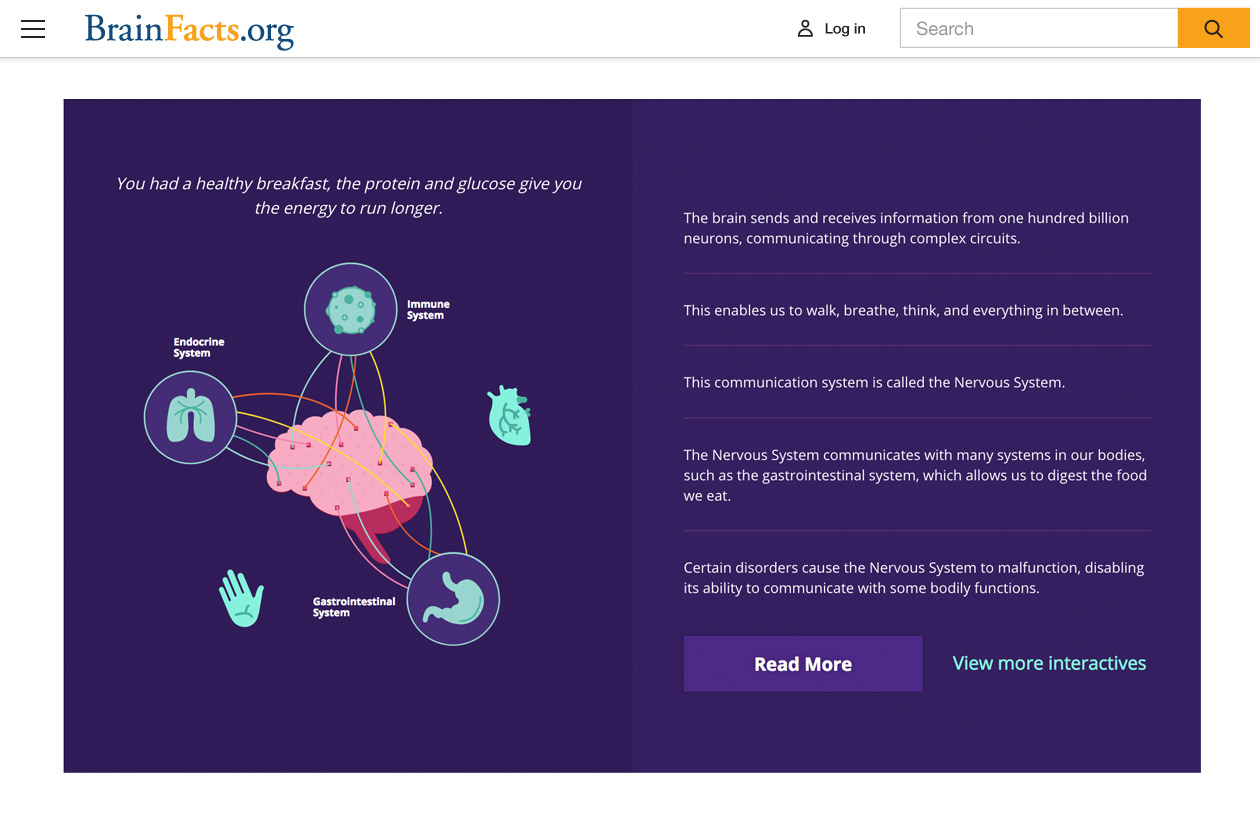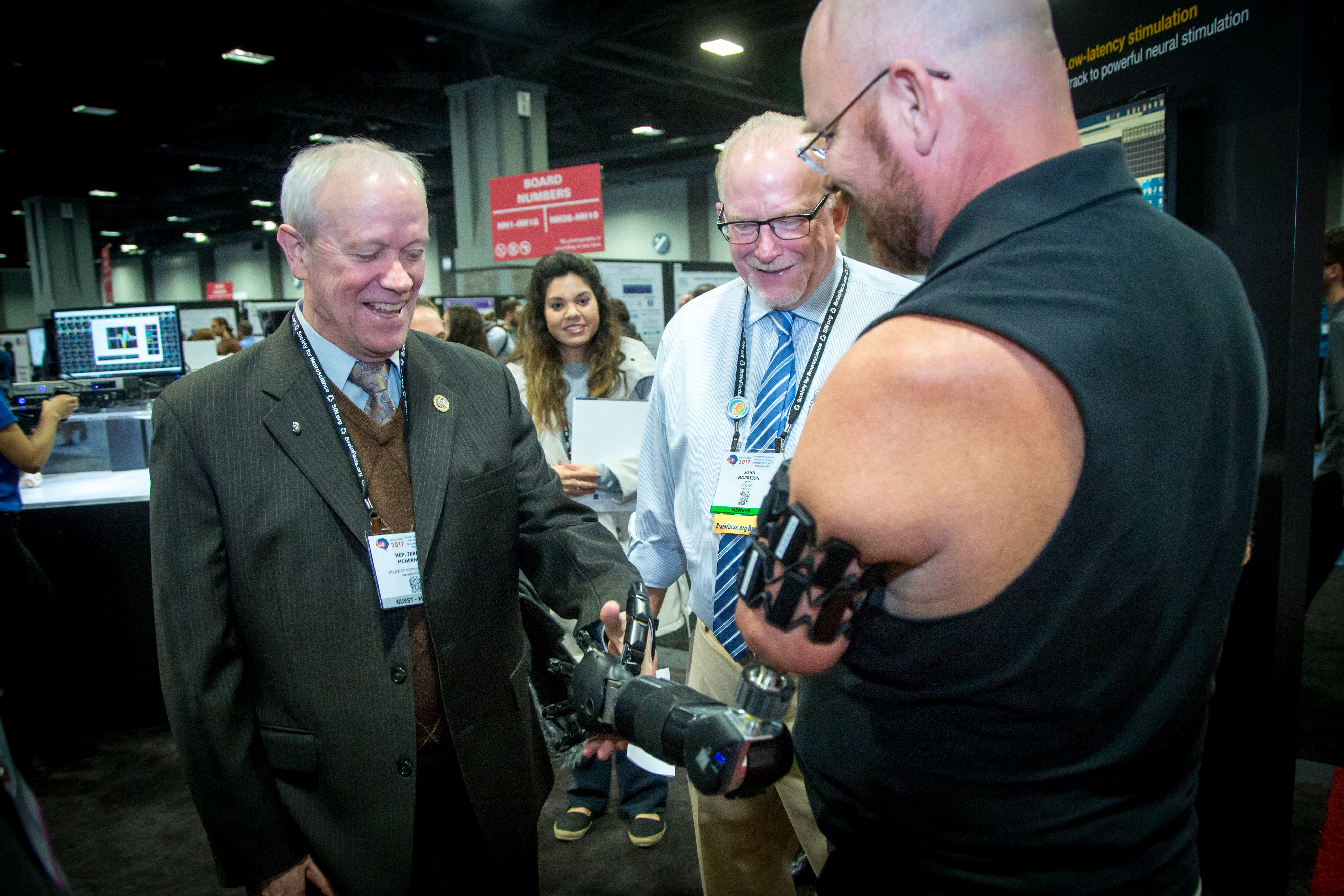
Neuroscience 2017: Driving Global Scientific Progress
More than 30,000 attendees from 80 countries convened in Washington, D.C., November 11–15 for Neuroscience 2017, SfN’s 47th annual meeting.
As the world’s largest meeting about the brain and nervous system, the event provides an unmatched venue for scientists from around the world to expand their knowledge of the field, learn from colleagues in their research areas of interest, and form collaborations for future research. Despite facing unpredictable political times, Neuroscience 2017 maintained its strong international attendance from previous years, continuing a tradition of robust scientific exchange among scientists from all over the world. Check out our Neuroscience 2017 infographic showing the breadth of the meeting and its expansive reach.
Neuroscience 2018
November 3–7, San Diego
Propose a Social Issues Roundtable by Feb. 12 or a Professional Development Workshop by Feb. 19.
“Especially in the current sociopolitical climate, it's important that people are out there still maintaining passion and enthusiasm for research,” said Vanessa Gutzeit, a graduate student at Weill Cornell Medical College. The annual meeting “is just one of many great events that scientists can participate in where we can bring that to the forefront in society.”
Scientific sessions imparted new knowledge allowing for deeper understanding of brain structure, function, and health and suggested opportunities for continued, collaborative research in basic neurobiology and biomedicine as well as for treatments for neurological and psychiatric disorders.
“This is a worldwide effort that we are undertaking to try to develop new ways to treat and prevent brain disorders like Alzheimer's, stroke, Parkinson's, PTSD, head injury, etc.,” said William Frey II, Ph.D., research director at the HealthPartners Center for Memory and Aging. “We don't want to individually have to reinvent the wheel. There are so many people out there around the world who have expertise that we can use to move our new treatments forward.”
This year’s theme for the Presidential Special Lecture series, “Expanding the Boundaries of Neuroscience,” showcased the potential of interdisciplinary collaboration to precipitate nascent discoveries in neuroscience. Lectures featured prominent scientists including:
- Jeffrey I. Gordon, M.D., Washington University School of Medicine: “The Gut Microbiota and Childhood Undernutrition: Looking at Human Development From a Microbial Perspective”
- Steven E. Hyman, M.D., Broad Institute: “What Does the Fiendish Genetic Complexity of Schizophrenia Portend for the Future of Neuroscience?”
- Erich D. Jarvis, Ph.D., The Rockefeller University and Howard Hughes Medical Institute: “Insights From Nonhuman Animals Into the Neurobiology of Language”
- Xiaowei Zhuang, Ph.D., Harvard University and Howard Hughes Medical Institute: “Illuminating Neurobiology at the Nanoscale and Systems Scale by Imaging”
Featured and special lectures divulged findings in a breadth of topic areas, including neuronal fate and migration, neurogenesis following brain injury, optical monitoring of neural circuits, neuroepigenetic pathways involved in behavioral plasticity, mammalian circadian clocks, decision-making, the relationship between neuroscience and artificial intelligence, and more.
In the Dialogues Between Neuroscience and Society lecture, Siddhartha Mukherjee, M.D., a Columbia University physician and researcher and author of the Pulitzer Prize-winning book The Emperor of All Maladies: A Biography of Cancer, sat down with SfN Past President Eric Nestler, M.D., Ph.D., to talk about the importance of communicating the promise of scientific research as well as the ethical consciousness that is requisite to it — a theme of his latest book, The Gene: An Intimate History.
In response to a question concerning how neuroscientists can broaden public understanding of the basic science in the face of an “anti-science environment,” Mukherjee cited two principles: avoiding jargon and telling the truth.
“We are consumers but also recipients of public largesse,” he said. “Our laboratories run mainly because the public in this country decided that it would be a wonderful thing for the world to understand how nature works and to be able to cure diseases, so it behooves us to limit jargon and to tell the truth.”
At the meeting’s poster sessions, more than 13,500 scientists shared details about their research, while in the Exhibit Hall, more than 500 exhibitors displayed laboratory instruments and technologies, shared information about organizations and publications, and offered samples of scientific tools.
For young scientists for whom it was their first year presenting a poster, the meeting provided a venue for sharing original ideas and speaking publicly about their research.
“Giving these students an opportunity to showcase their research allows them to grow as [scientists and] love the research they do, and it creates a scientific identity,” said Kizzy Vazquez, a project administrator and researcher at Hunter College.
Neuroscience 2017 attracted the interest of more than 300 science journalists and public information officers, resulting in articles in noted publications such as NPR, The Washington Post, Nature, Science, Scientific American, Newsweek, and Popular Science. Forty-five researchers presented in 10 press conferences on newsworthy topics including opioids, effects of stress on epigenetics and neurogenesis, brain stimulation techniques, advances in neuroprosthetics, and the microbiome’s influence on brain health.
Additionally, 15 professional development workshops provided attendees of all career levels opportunities to enhance their professional and career skills. The workshops covered topics including writing strong NIH grant applications, starting a successful career as a female neuroscientist, and communicating about science with the public through storytelling. Recordings of the workshops will be posted on Neuronline.























